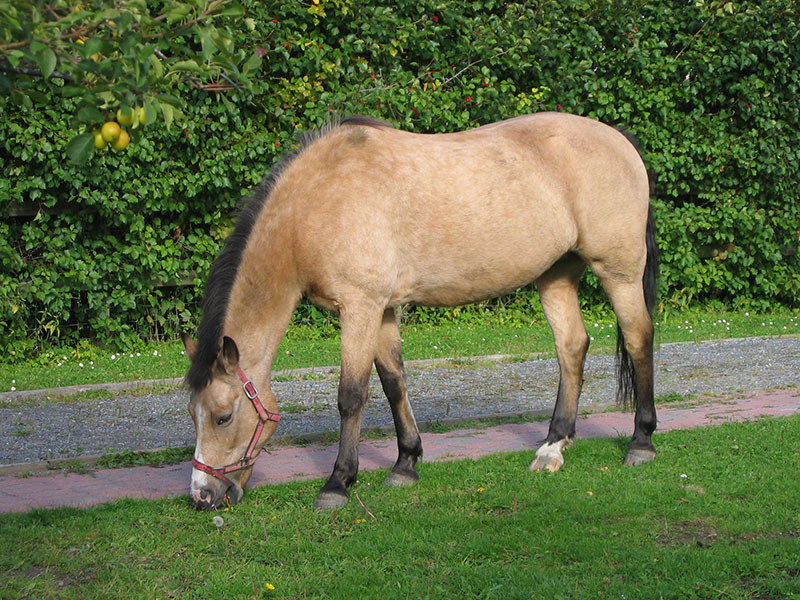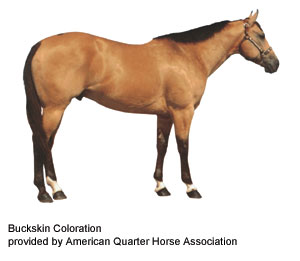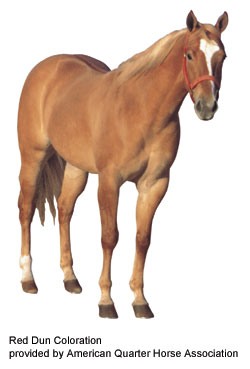Buckskin Horses
Buckskin and Dun genetics are thoroughly discussed on the Coat Color Genetics website. These colors of horses are registered in several equine breed organizations. The following discussion on color has been provided by the International Buckskin Horse Association.
Contrary to the belief of many, the Buckskin or Dun horses are not a mere "color" in the equine world. Those who studied genetics some time ago believed that the Dun horse was the result of a dilution gene, and that breeding Duns and Buckskins to each other often resulted in the birth of an Albino foal. More recent studies have proven this to be in error. The true Buckskin horse may trace his lineage through a direct line of Dun or Buckskin colored ancestors, as far back as recorded history of the animal are available.
The Buckskin is thought to have originated from the Spanish Sorraia. The Norwegian Dun, found today in Norway and other Scandinavian countries, is a breed so old that his actual origin is lost in antiquity. However, there are many indications that even he obtained his Dun Coloring from the horses of Spain. The blood of the Sorraia (and the Norwegian Dun as well) filtered into nearly every breed found in the world today, hence the fact that the Buckskin, Dun or Grulla may be found in nearly every breed.
No-the Buckskin horse in not a mere "color." Buckskins, Grulla and Duns are noted for many qualities that are not characteristic of other types of horses. Their color is an indication of the superior genetic heritage they possess. Buckskins have been long noted for their superior qualities and strength. They have more stamina, more determination, harder feet, better bone, and are generally hardier than other horses. A Buckskin with weak or spavined legs is a rarity. "Tough as wet leather" is a good description of the true Buckskin.
References
International Buckskin Horse Association, P.O. Box 268, Shelby, IN 46377.
Phone: (219) 552-1013



